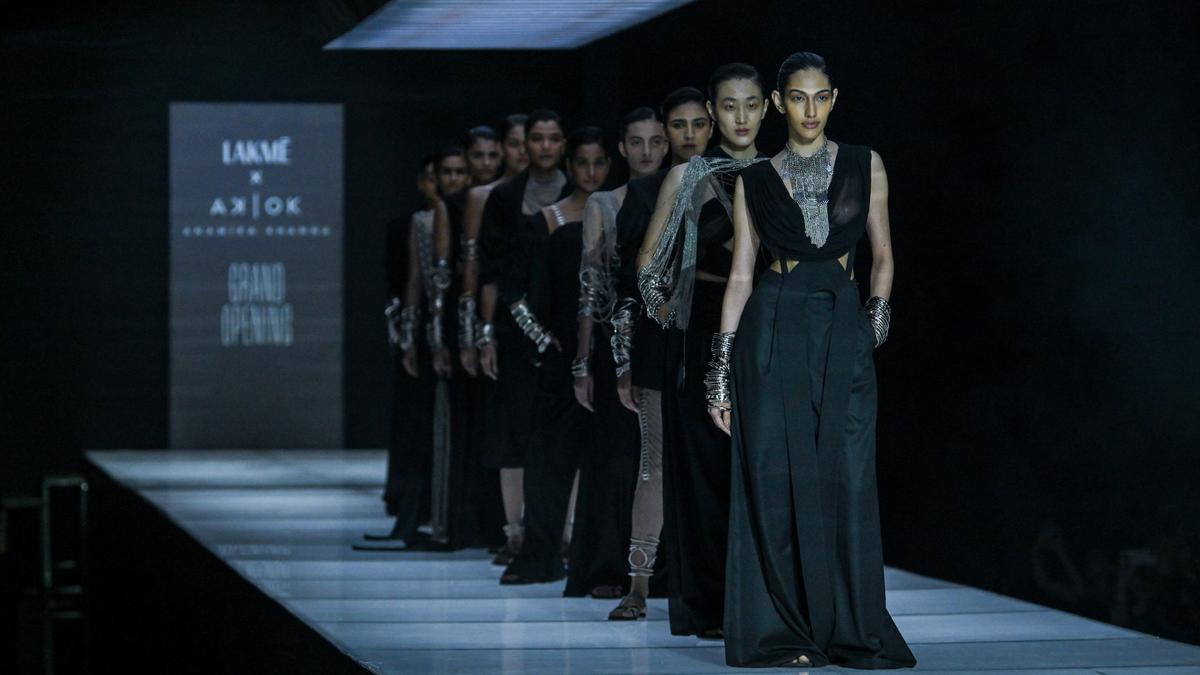
Lakmé Fashion Week 2025 trend report: Menswear, sustainability, and everyday luxury
The Hindu
Lakmé Fashion Week 2025 showcased a shift towards thoughtful, sustainable fashion with a focus on craftsmanship and wearability.
In its 25th year, the Lakmé Fashion Week 2025, in partnership with the Fashion Design Council of India (FDCI) was less about spectacle and more about sensibility. Theatrics took a backseat to thoughtfulness, as designers re-evaluated what fashion means in a climate of change — climatic, cultural, and consumer-driven. There was no singular aesthetic dominating the five-day showcase, but rather a quiet recalibration of technique, proportion, and intent.
From seasoned couturiers to new-gen labels, the collections spoke of dualities — tradition meeting tech, comfort meeting structure, and art meeting wearability. Instead of chasing virality, designers leaned into craft. Surface embellishment was purposeful. Colour palettes were restrained. Gender norms blurred. Heritage, once treated with nostalgia, was now layered with a future-facing lens.
Refined maximalism
While the West continues to orbit around quiet luxury, Indian designers at Lakmé Fashion Week offered a counterpoint — maximalism, but measured. It was a season of drama laced with discipline; ornamentation wielded with intent.
Anamika Khanna’s Silver Collar collection set the tone. Deconstructed tailoring met opulent embroidery — structured bralettes, high-waisted metallic trousers, and chainmail flourishes. It was less about flamboyance, and more about confidence laced with craft.
Rahul Mishra’s The Silk Route, under his prêt label AFEW, drew from flora, folklore, and textile legacies. The collection wove Nature into couture, presenting hand-embroidered ecosystems that rippled with detail but never tipped into excess. The intricacy was intense, but the message — sustainability and quiet wonder — came through loud and clear. The collection highlighted visual exchanges across borders, mirrored in the parallel evolution of India’s bandhani and Japan’s shibori. A quiet ode to craft, culture and shared histories.
Amit Aggarwal took maximalism in a futuristic direction. His collaboration with tech brand Nothing resulted in a line where Banarasi brocade collided with industrial polymers — ballooning trousers, corseted blouses, and sharp tailoring gave tradition a glossy, sci-fi sheen. The palette was monochrome, but the craftsmanship spoke volumes.

For many years, scientists had had difficulties studying migration in insects because of their size and experts’ inability to track their movement thanks to technological limitations. But a boom in genomics and the development of tracking technologies in miniature has allowed researchers to delve into insect migration with astounding precision.





















 Run 3 Space | Play Space Running Game
Run 3 Space | Play Space Running Game Traffic Jam 3D | Online Racing Game
Traffic Jam 3D | Online Racing Game Duck Hunt | Play Old Classic Game
Duck Hunt | Play Old Classic Game










